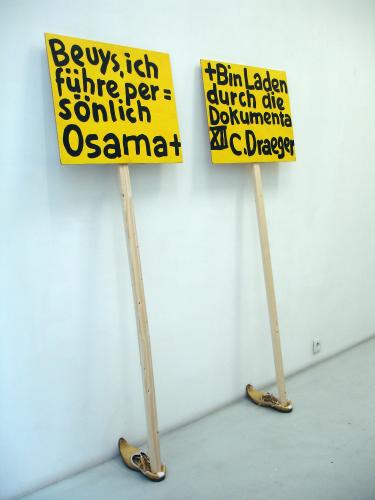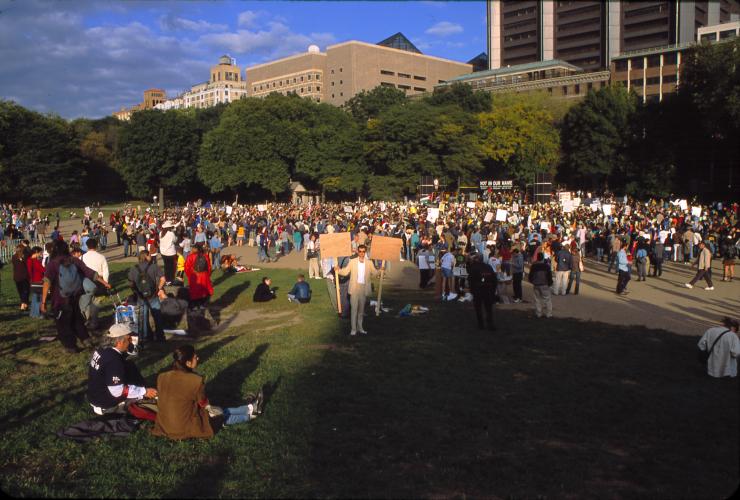Wood, Paint, Shoes, Straw (2003)
(Translation: Beuys, I will personally take Osama Bin Laden to Documenta 12)
In the 1970's the leftist terrorists Andreas Baader and Ulrike Meinhof, and their group RAF (Red Army Faction) were the public enemy #1 in Germany. They infused a degree of fear and paranoia within the german society that can be only compared to the threat Al Kaida and Osama Bin Laden presents to western societies since Sept 11. Beuys' piece addressed a promise to the greatest dead german artist, Albrecht Duerer, that he will take these enemies of society to visit Documenta and thus try to achieve a reconciliation through the healing power of art. Of course, the irony that he would never be able to get these people in the first place, since they were incarcerated at a high security prison with long term convictions, also suggested that the piece was a provocation that suggested a critique for the heavy-handed reactions of the german authorities. Their crackdown led to a period of restricted personal freedom in Germany and a degree of surveillance that reminded of George Orwell's "1984" - something that happened again on a worldwide scale after September 11. Draeger's remake of Beuys' seminal 1972 piece was a promise to Beuys, the most important german artist of the 20th century to do the same with Osama Bin Laden, the most feared terrorist of our time. It updated issues that have only gained in actuality since the 70's. However, it became a somewhat cynical promise, after Osama Bin Laden has been found and killed by the CIA: inviting him for a trip to Kassel is now an even more impossible project than to invite Baader+Meinhof in 1972.


